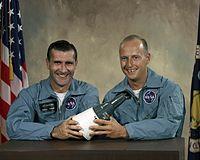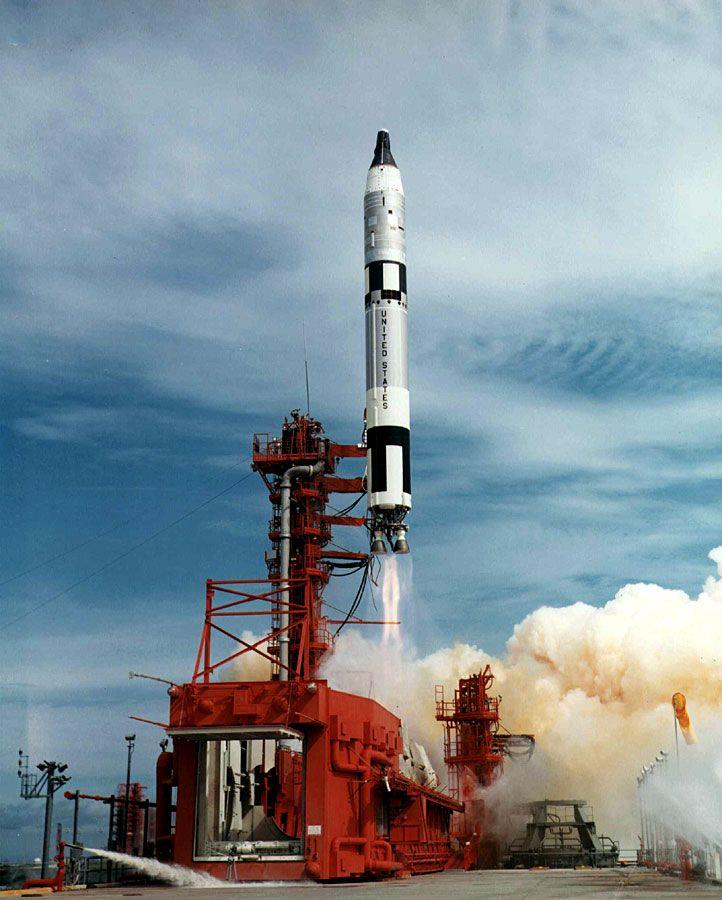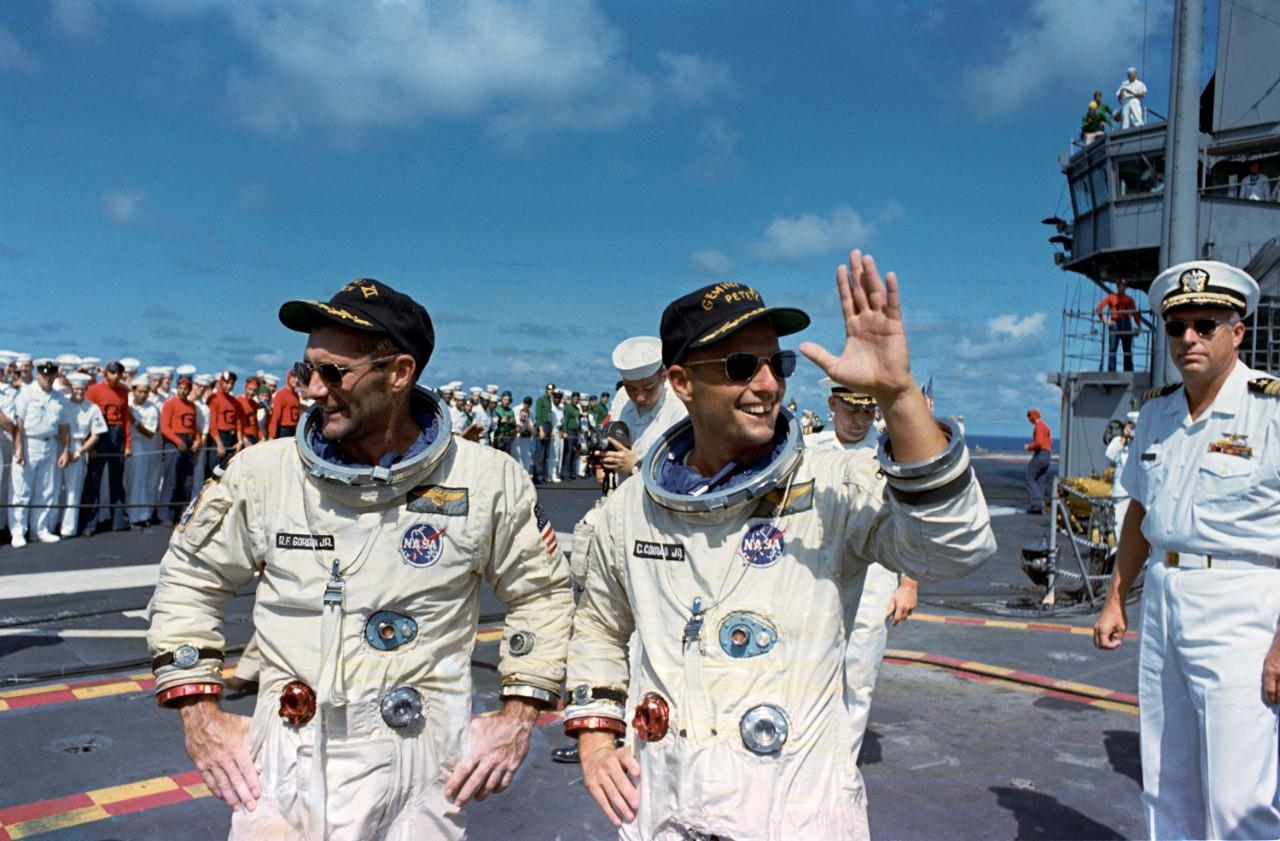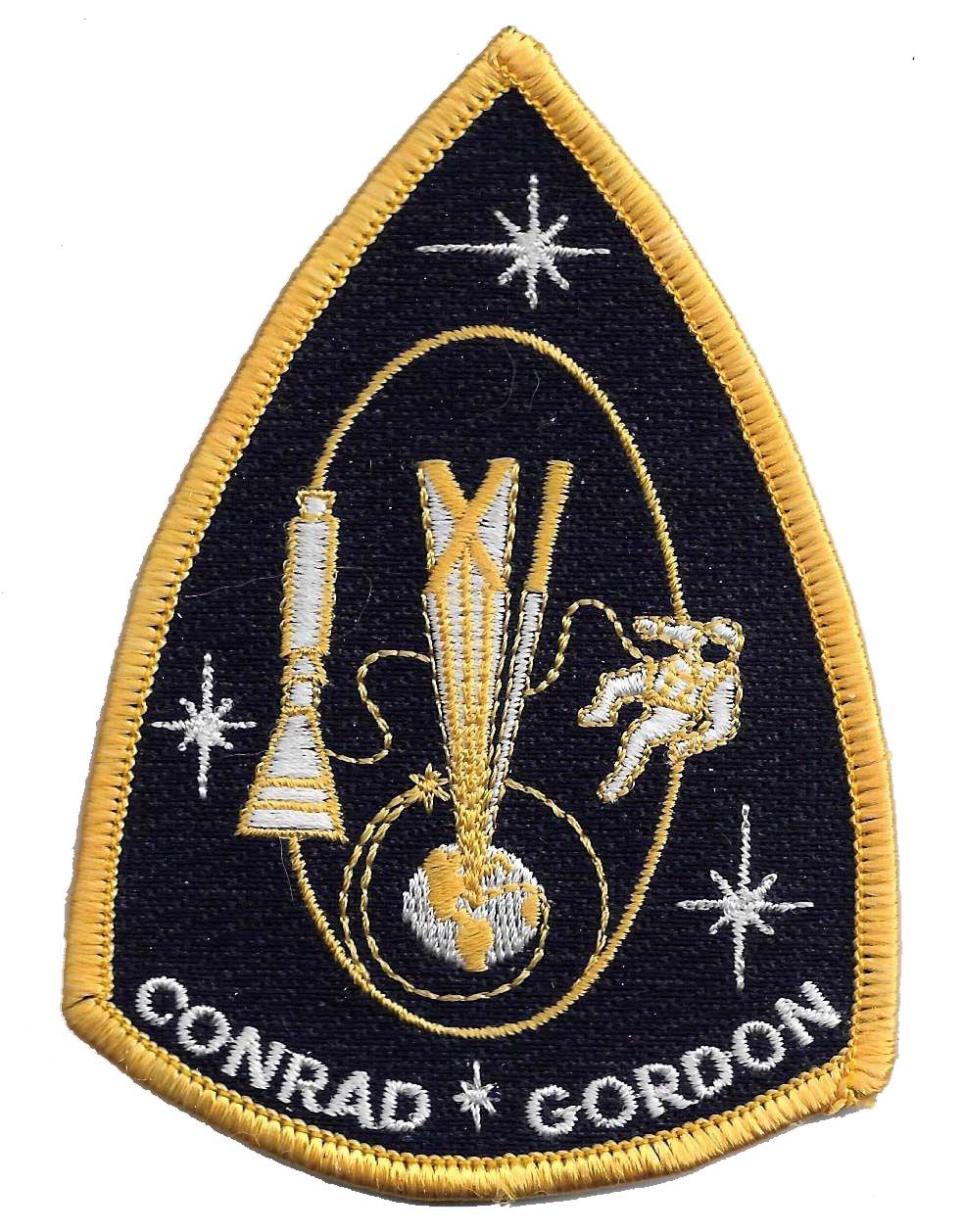Charles "Pete" Conrad Jr.
Richard F. Gordon Jr.
Backup Crew:
Command Pilot: Neil A. Armstrong
Pilot: William A. Anders
Gemini 11 (officially Gemini XI) was the ninth manned spaceflight mission of NASA's Project Gemini, which flew from September 12 to 15, 1966. It was the 17th manned American flight and the 25th spaceflight to that time (includes X-15 flights over 100 kilometres (62 mi)). Astronauts Charles "Pete" Conrad, Jr. and Richard F. Gordon, Jr. performed the first-ever direct-ascent (first orbit) rendezvous with an Agena Target Vehicle, used the Agena rocket engine to achieve a world record high-apogee earth orbit, and created a small amount ofartificial by spinning the two spacecraft connected by a tether. Gordon also performed two extra-vehicular activities for a total of 2 hours and 41 minutes.
(Second Space Flight)
Pilot
Gemini Space Missions
(First Space Flight)
Astronauts:
Study
Research
Main Index
Space Cosmology
Science Research
*
About
Science Research
Science Theories
Desk
Site Map
BookShelf
Copyright © by Nigel G Wilcox · All Rights reserved · E-Mail: ngwilcox100@gmail.com
Designed by Nigel G Wilcox
Powered By AM3L1A
Pages within this section: Gemini Manned Space Flights
Gemini 11
Pages within this section:
8
M
8
SM
Sub-Menu
menu
-
9
10
11
12
Gemini 11
Command Pilot:

Gemini 11's record altitude was ultimately the result of an internal race to the Moon. As early as 1961, NASA's Jim Chamberlin and McDonnell Aircraft had advocated using Gemini spacecraft to get to the Moon sooner than Apollo. Their proposals considered using Centaur rockets to boost the Gemini on a circumlunar trajectory (similar to the Soviet's Zond program), lunar orbit missions using Centaur rockets for translunar injection and Agena for lunar orbit insertion, and even lunar landing missions using Gemini in place of the Apollo Command Module and a small open-cockpit Langley Light LM in place of the Apollo Lunar Module. Multiple Titan or Saturn IB rockets, and even the abandoned Saturn C-3 were considered as the launch vehicles.
Pete Conrad liked these ideas and together with McDonnell corporations strongly advocated his Gemini 11 to be circumlunar. Discretely called 'Gemini - Large Earth Orbit', the plan would use a Titan IIIC-launched Transtage. The Gemini 11 crew would be launched with the Titan II GLV as they did in reality, and would dock with the Transtage, which would then boost them to translunar velocity. Conrad managed to stir Congressional interest, but NASA administrator James Webb informed them that any extra funds Congress cared to appropriate for such a project would be better spent accelerating the Apollo program. After further internal struggles, Conrad finally got NASA approval for the Agena on his Gemini 11 flight to boost him onto two record highly elliptical 1,370 km orbits. This high flight was the only remnant of lunar Gemini.
Main Objectives: To Perform a direct-ascent rendezvous with the Agena Target Vehicle on the first orbit in support of Project Apollo. This would simulate a Lunar Module rendezvous with the Command/Service Module after a lunar landing.
To use the Agena rocket engine to put the combined craft in a high-apogee elliptical orbit.
To perform two extra-vehicular activities.
To Demonstrate passive attitude stabilization of the two spacecraft connected by a tether and create artificial gravity by spinning the combined craft.
To perform miscellaneous scientific experiments.
To perform a computer-controlled atmospheric reentry to a precision splashdown point.
Gemini Space Missions
















